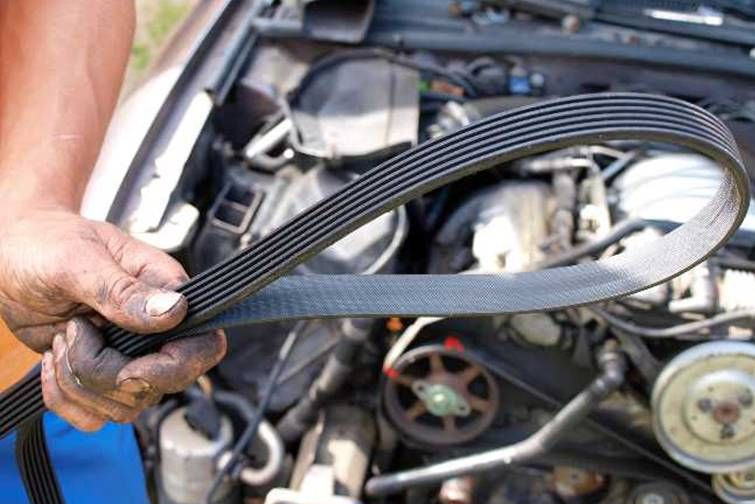Belt Tensioner determines how long will the belt run as too little tension will contribute to slippage, premature wear, tear and excess heat.
In addition, the Belt Tensioning also affects bearing life as the belt drives excess heat will cause a slippage which in turn reduces and lowers the bearing's life.
Over time, tension loss is common and happens to all belts, regardless if it's wedge belts, flat belts or even V-belts.
Thus, it is important to maintain a range of tension that can ensure a satisfactory operation for multiple pulleys to ensure high-power transmission.
Some of the methods that can be helpful to properly tension your V-belt include the Force Deflection method and the Belt Frequency Meter method.
2. Step-by-Step Guide: Force Deflection Method

The first method to properly tension your v-belt would be Force Deflection which is known to give better heat dissipation. Here is the step-by-step that needs to be followed:
Turn Off Equipment: Before you begin, ensure that the equipment driven by the V-belt is turned off and completely stationary to ensure safety.
Locate Tensioning Point: Identify the tensioning point on your V-belt drive system. Depending on the manufacturer, there should be a dedicated tensioning pulley or an adjustment mechanism located on the v-belt.
Measure Deflection: Using a suitable tool, such as a belt tension gauge or a simple ruler, measure the deflection of the belt. Deflection refers to the distance the belt sags or deflects when a force is applied perpendicular to it. Typically, you would measure the distance between the two pulleys at the midpoint of the belt span.

Apply Force: Apply a specific force to the midpoint of the belt span perpendicular to the belt. This force should be sufficient to deflect the belt to a predetermined amount. Often, a deflection of around 1/64 to 1/32 inch per inch of belt span is recommended.
Measure Force: Use a belt tension gauge or a similar device to measure the force required to achieve the desired deflection. This force measurement is crucial for determining whether the belt is tensioned correctly.
Adjust Tension: If the measured force is within the recommended range specified by the equipment manufacturer, the belt tension is adequate. If the force is too high or too low, adjust the tensioning mechanism accordingly.
Recheck: After making adjustments, recheck the belt tension by repeating the force deflection measurement process. Continue adjusting until the correct tension is achieved.
Final Inspection: Once the proper tension is attained, visually inspect the entire V-belt drive system to ensure there are no signs of misalignment, damage, or abnormal wear.
Turn On Equipment: Once you're satisfied with the tension and overall condition of the V-belt drive system, you can safely turn on the equipment and resume operation.
Regardless of the specific tensioning point used, the goal is to apply the appropriate amount of tension to the V-belt to ensure proper power transmission. It's essential to follow the manufacturer's recommendations and guidelines for tensioning to avoid premature wear and reduced performance.


